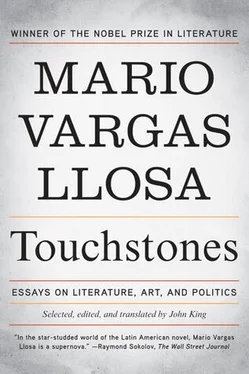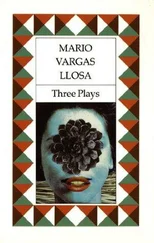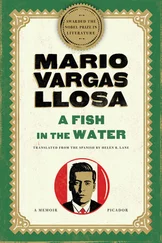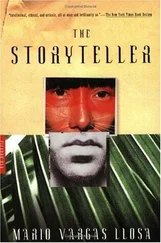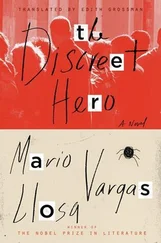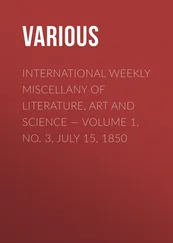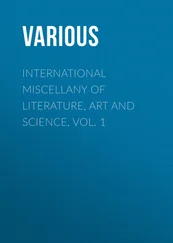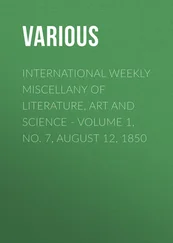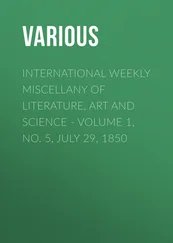Every writer is firstly a reader and to be a writer is also a different way of continuing to read. I discovered the intimate relationship between reading and writing in those years because — and I’m also sure of this — the first things that I wrote, or, better, I scribbled, were changes to, or extensions of, the adventures I was reading, either because I was sad that they had come to an end or because I would have liked them to have turned out differently to the ways decided by their authors. These corrections and additions were, as I understand them, precocious manifestations of the vocation that would produce, years later, all the stories, novels, essays and plays that I have written. And I do not feel in the least uncomfortable, quite the reverse, to recognise that in my vocation and in my fictions, I am a flagrant literary parasite.
Everything I have invented as a writer has its roots in lived experience. It was something that I saw, heard, but also read , that my memory retained with a singular and mysterious stubbornness, that formed certain images which, sooner or later, and for reasons that I also find very difficult to fathom, became a stimulus for fantasy, a starting point for a complete imaginary construction. I would not have written Time of the Hero if I had not spent two years as a cadet at the Leoncio Prado Military Academy, where the action of the novel takes place, nor would I have invented the stories about Fushía and Aquilino, Lalita and the Jungle Woman, the missionary nuns of Santa María de Nieva and the unfortunate Aguaruna head man Jum, without the trip to the Upper Marañón that I went on in 1958 with the Mexican anthropologist Juan Comas, organised by the University of San Marcos and the Summer Linguistic Institute. That journey gave me material for The Green House , as did the solitary brothel, in the middle of the sands of Piura, that was the focus of my schoolmates’ fantasy and desires in the Salesian college where I was enrolled as soon as we settled in that northern city in Peru after leaving Cochabamba.
In Piura I also lived or experienced in some way the events that, turned into memories, became the raw material for most of the stories in my first book, The Cubs : the attempt at a school strike, the fist-fights in the dry river bed, the abuses of the estate owners on their lands, where they still ruled as tyrants. The world of nostalgia and youthful memories that my grandparents and Mamaé retreated into as their long lives neared the century gave me the theme and characters of The Young Lady from Tacna . I found the story of Pichulita Cuéllar, by contrast, in a newspaper I was reading in Lima, on the bus from Miraflores to the city centre. The hired scribe I invented in Kathie and the Hippopotamus , who exaggerates and sugar-coats the travel journal through ‘the yellow Orient and black Africa’ written by a woman from Lima who had discovered her literary vocation somewhat late in life, was based on my life, in the first instance, when I was doing piecework in a Paris garret for a woman with an inventive imagination and deficient syntax.
But just as much as my lived experience, what I have read — which is another, sometimes more noble and sumptuous, way of living — has also had a decisive influence on the gestation of all my stories, although, in this case, I hesitate when it comes to giving specific authors and titles. I am sure that Sartre’s ideas on committed writing, which in the fifties and early sixties I believed in blindly, had a great deal of influence on the critical intentions and ethical preoccupations of my first novels, and that the epic style and romantic mythology of André Malraux, whom I read with great passion during my university years, left its traces in my first stories along with my idols of those years, the US novelists Hemingway, Dos Passos, Caldwell, Steinbeck, Scott Fitzgerald and younger writers like Truman Capote and Paul Bowles. But the greatest influence was, had to be, that of the supreme teacher of so many novelists of my generation (and also of the generations that immediately preceded and followed mine) throughout the world: William Faulkner. Without the wonderment that I felt when I discovered the richness of shades, allusions, perspectives, harmonies and ambiguities of his prose, and the absolutely original way in which he organised his stories, I would never have dared to rearrange ‘real’ narrative chronology in my own work, or to present an episode from different points of view and levels of reality, as I did in Time of the Hero, Conversation in the Cathedral and in the rest of my novels, nor would I have written a book like The Green House , in which the words are as visible, and sometimes more visible, a presence as the characters themselves — a landscape for the story — and in which the construction — the perspectives, the flow of time and the changing narrators — is all of labyrinthine complexity. For it was thanks to the Yoknapatawpha saga that I discovered the prime importance of form in fiction and the infinite possibilities offered by point of view and the construction of time in a story.
‘Influence’ is a dangerous word, and, when applied to the writing of literature, it is also a contradictory term. There are influences that stifle originality and others that allow writers to discover their own voices. In any event, it is very likely that the most fertile literary influences are those that are not very evident to us, that we are not very conscious of. For that reason, although I know which authors captivated me and opened up to me the world of dreams, and which writers taught me about writing and the structure of fiction, I would not venture to say that these are the writers — and I would add to that list, of course, Flaubert, Melville, Dickens, Balzac, Tolstoy, Martorell’s Tirant lo Blanc , Thomas Mann and many others — to whom I owe the greatest debt, let alone specifying exactly what this debt might be.
The only thing that I am absolutely certain about is that it was in these early childhood years, spent in that large house on Ladislao Cabrera Street in Cochabamba, in the heart of my extensive, almost biblical, family presided over by my grandparents, when I started reading my first stories, in books and children’s magazines that Baby Jesus brought me for Christmas or which I bought with my pocket money, that I first became interested in writing fiction, something that has shaped my life from then on. And in some discreet and distant way, these early stories still kindle my dreams.
London, 24 June 1997
A Twenty-First-Century Novel
In the first place, Don Quixote de la Mancha , the immortal novel by Cervantes, offers us an image: the image of an hidalgo in his fifties, crammed into anachronistic armour, as scrawny as his horse, accompanied by a coarse, podgy, peasant riding on a donkey, who acts as his squire, travelling the plains of La Mancha, frozen in winter and baking hot in summer, in search of adventures. He is spurred on by a mad plan: to revive the time long since past (and which, furthermore, never existed) of the knights errant, who travelled the world helping the weak, righting wrongs, and offering justice to ordinary men and women that they would not otherwise receive. He draws inspiration for all this from his readings of romances of chivalry, which he takes as true stories, as truthful as the most meticulous history book. This ideal is impossible to achieve because everything in the reality that Don Quixote lives in gives the lie to it: there are no longer knights errant, and no one professes the ideas or respects the values that they adhered to. Similarly, war is no longer a matter of individual challenges, in which two knights resolve disputes in a precise ritual. Now, as Don Quixote himself sadly laments in his speech on arms and letters, war is not decided by swords and lances, that is by the courage and skills of an individual, but by the thunder of cannons and gunpowder, an artillery that, through its noisy slaughter, has blown apart the codes of individual honour and the deeds of heroes like the mythic figures of Amadis of Gaul, Tirant Lo Blanc and Tristan de Leonis.
Читать дальше
